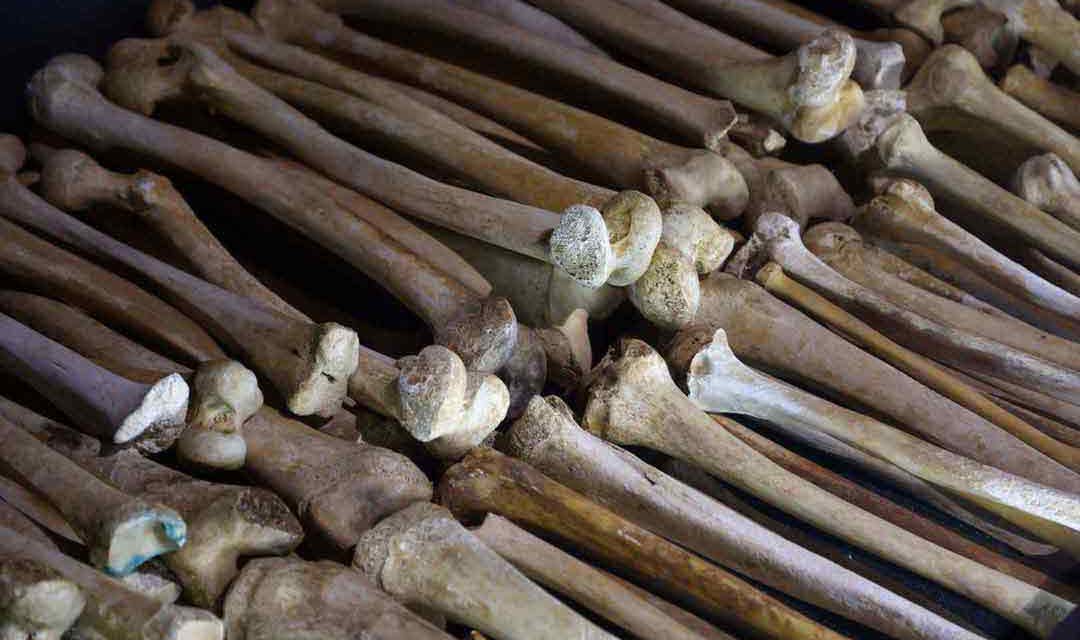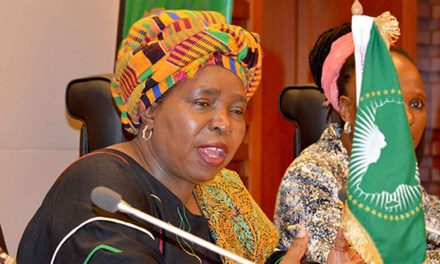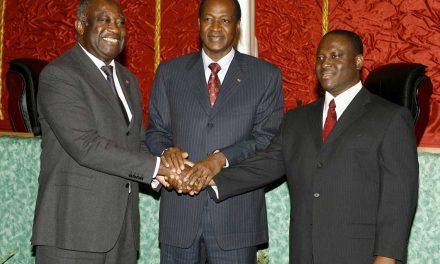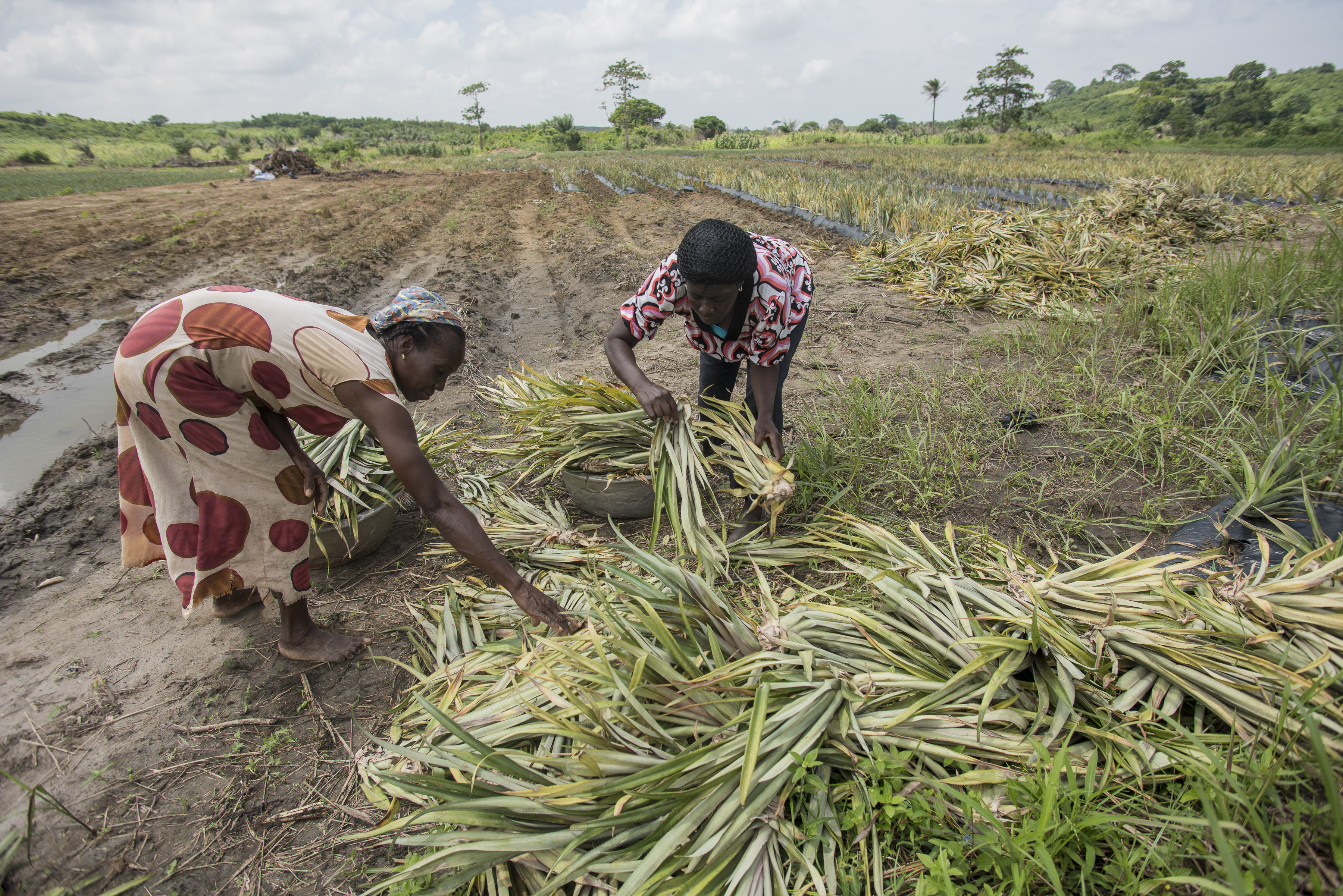Rwanda: ‘re-education camps’
A Canadian academic is ordered to pay attention, keep quiet and learn the country’s official history
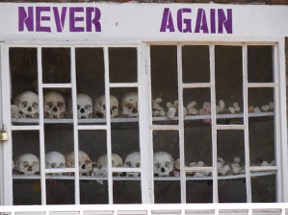
Genocide Memorial Church, Karong-Kibuye, West Rwanda, Rwanda. Image Wikimedia Commons
By Susan Thomson
In the midst of my doctoral fieldwork, the Rwandan government ordered me to undergo “re-education”. I was just over halfway finished when the executive assistant to the minister of local government told me that he had to revoke my letter of permission because my research was “against national unity and reconciliation” and “was not the kind of research the government needed”. The purpose of my 2006 research was to understand the effects of the post-genocide government’s policy of national unity and reconciliation on ordinary peasant Rwandans living in the south-western region of the country. My research was ethnographic, which meant that I spent considerable time in rural areas, consulting ordinary Rwandans about their lives before, during and after the genocide, to illustrate how they subtly and strategically resist that government policy. In the government’s view, I was “wasting” my time talking to “peasants about politics” since they are “all liars anyway”. Furthermore, I had clearly been “brainwashed”. So, the minister’s assistant took my passport “for safekeeping” and presented me with a list of re-education activities, including: the assignment of a government handler to ensure I stopped talking to peasants; a list of high-ranking government, private sector and civil society representatives to meet so I could “learn the truth” about the government’s policy of national and reconciliation; and an order to attend both gacaca court proceedings and ingando citizenship re-education camps as a guest of the government. I knew little about ingando as it is an under-studied aspect of the government’s post-genocide reconstruction policy of national unity and reconciliation.
I spent a week participating in ingando alongside a group of approximately 100 confessed génocidaires who were in the fifth week of their twelve-week re-education process. All these men had been released from prison following their gacaca court appearances, and were required to go through ingando re-education before returning to their home communities. In ordering my re-education, the Rwandan Patriotic Front (RPF) gave me a frontline look at the tactics and techniques it uses to organise the flow of information and determine what counts as the “truth” in post-genocide Rwanda (see Pottier, 2002). In particular, my ingando experience offered a behindthe- scenes look at one of the key mechanisms of the RPF’s topdown policy of national unity and reconciliation. The purpose of this article is to contrast the government’s stated goals of ingando with its actual effects on its participants. I argue that ingando does little to re-educate confessed génocidaires on how to reconcile with family, friends and neighbours. Instead of promoting a sense of national unity and reconciliation, it teaches these men, the majority of whom are ethnic Hutu, to remain silent and not question the RPF’s vision for creating peace and security for all Rwandans. For us, ingando was an alienating, oppressive and sometimes humiliating experience that worked hard to silence all forms of dissent—something that may, paradoxically, crystallise and create stronger dissent in the future. I develop my argument in two sections. First, I situate the ingando as a key mechanism within the broader policy of national unity and reconciliation.
I then set out the official goals of ingando re-education for genocide suspects to illustrate the extent to which ingando teachings are an instrument for consolidating state control—rather than a sincere effort to promote reconciliation among ordinary Rwandans. Specifically, I analyse how those suspects reacted to the version of history that ingando taught. The article builds on Alison Des Forges’ legacy of human rights activism in critiquing and calling to account the oppressive actions of the RPF as it works to exclude a significant portion of the population from political life. It also builds on Des Forges’ academic commitment to including the lived histories of ordinary people. The policy of national unity and reconciliation is an ambitious social engineering project that the RPF-led government claims will forge a unified Rwandan identity while fostering reconciliation between genocide survivors and perpetrators. Under this policy, the government re-educates the population on the ethnic unity that existed before colonialism—a time when Tutsi and Hutu lived in “peaceful harmony and worked together for the good of the nation”, according to a 2004 document by the National Unity and Reconciliation Commission (NURC). In romanticising the historical past and presuming that all Hutu need to be re-educated, the policy produces two broad simplifications: all Tutsi (whether they were in Rwanda during the genocide or not) are innocent victims or “survivors” and all Hutu (whether they participated in the genocide or not) are guilty perpetrators.
The policing of boundaries of public speech lies at the heart of this national unity and reconciliation. Rwandans—elites and ordinary folk alike—can only speak publicly about ethnicity in state-sanctioned settings like the ingando camps, the gacaca trials and during the national genocide mourning week (7-14 April). Otherwise, the RPF does not allow for public discussion of the violence that individual Rwandans of all ethnicities—Hutu, Tutsi and Twa—experienced before, during and after the genocide. The government promotes national unity and reconciliation in numerous ways. It encourages collective memory of the genocide through memorial sites and mass graves to show the end result of ethnic division. Every year, commemorations are held during the national mourning week to remind Rwandans of the “pernicious effects of ethnic divisionism” (interview with NURC official, 2006). The government also adopted new national symbols (flag, anthem and emblem) in 2001 because the existing ones “symbolised the genocide and encouraged an ideology of genocide and divisionism” (interview with NURC official, 2006). As part of Rwanda’s administrative re-structuring in 2006, the government changed place names at all administrative levels (from villages to provinces) to “protect survivors from remembering where their relatives died” (interview with Ministry of Culture official, 2006). In addition, the revised 2003 constitution criminalised public references to ethnic identity (article 33) as well as “ethnic divisionism” and “trivialising the genocide”.
The ingando camps, then, are but one mechanism for promoting national unity and reconciliation. The government makes an important distinction between ingando solidarity camps and ingando re-education camps. Solidarity camps are for politicians, civil society and church leaders, gacaca judges and incoming university students, whereas reeducation camps are for ex-combatants, ex-soldiers, confessed génocidaires, released prisoners, prostitutes, and street children. Many of my ordinary Rwandan informants understood the solidarity camps as a form of political indoctrination for those who occupy, or will occupy, leadership positions, while they saw re-education camps as a form of social control to keep Hutus out of public life. I received my ingando re-education with confessed génocidaires who were about to be released back into their communities. These ingando normally run for three months and are designed to “urge them to tell the truth of what they did during the genocide before the gacaca courts” and “to prepare them for reintegration back to their communities of origin”, according to a 2006 NURC document, “The A-Z of Ingando”. Before starting my ingando re-education, I met with the local official responsible for administering the camp. He told me to “pay attention” to the “official goals” of the lessons: “because you will quickly learn how we are successfully promoting unity and reconciliation. The lessons you will see are focused on making them [génocidaires] understand the importance of telling the truth about what they did during the genocide. Once these Hutu tell the truth, Tutsi survivors can forgive them. We also teach them about the real history of Rwanda because we know corrupt leaders have misled them all these many years; they have been poisoned with ethnic hatred. We teach them that their role in society depends on how they tell their truth …”
Following this short speech, the local official assigned me a translator who carried an AK-47, and who held the rank of major in the Rwandan Patriotic Army. Emile was my escort for the week, and he was responsible for making sure “I learned what I needed to learn”. As I stood up to introduce myself, Emile silenced me, saying that he “knew well who I was” and why I had been ordered to undergo re-education. Emile turned to salute the local official, promising him that I would be “appropriately re-educated” under his tutelage. As we walked together to the soccer pitch where the day’s lesson was taking place, Emile advised me sternly “to pay attention” and “to keep quiet”. I was then taken to the meal hall, where I was introduced to my ingando classmates, who were told that I would spend the week with them. Here, we received our final instructions on the government’s expectations for our re-education. As one of the government officials responsible for our re-education said: “You will not be able to return to your communities without understanding the real causes of the genocide. We will test you on history to make sure you understand. Remember also that you are former Hutu. We are all Rwandans now and this is the basis of our history lessons.” Following this instruction, we walked single file, with military escort, to a dusty soccer pitch where the week’s lesson would take place. In stony silence, everyone sat in their pre-assigned place, sitting cross-legged across the field in three rows of five. I sat in the very back in the fifth row on the instruction of my government-appointed translator. Immediately after taking our seats, another government official strode up to the lectern with a retinue of lecturers. They were introduced as national historians and intellectuals who “have studied Rwandan history and understand the roots of the scourge of genocide well”.
We received our lessons in two- or three hour blocks. No questions were allowed; anyone who stretched his legs or began to nod off was jostled back to attention by one of the six armed military escorts who stood guard around the pitch. Our history lessons were taught over three days for approximately 24 hours of lessons. We received detailed lessons on the root causes of the genocide, notably the “deep-seated and seething ethnic hatred that Hutu have for Tutsi”. We were also taught that this hatred that Hutus have for Tutsis is “the root of the Rwandan disease [of genocide]”. We were then taught that the path to peace and security was for Hutus to rid themselves of this hatred. We were also taught that ordinary Hutu men caused the genocide because they acted on their hatred for Tutsis. We were then taught how to recognise the signs of trauma and to respect the needs of Tutsi survivors when they exhibit signs of trauma. Lastly, we were taught how to be a “good citizen”, which included lessons on respecting the orders of local officials, good hygiene, courtesy to others, and the importance of mono-cropping for national development. When we were not receiving our history lessons, we were taught how to sow and till the land. We also played a few games of soccer. Throughout the week, the mood was sombre. When the men showed signs of exhaustion or boredom, the armed guards appeared to ensure they remained focused on the task at hand. I found the pace gruelling, particularly since we were not well fed or rested. There was no downtime. The men around me said that they found the structure of the day to be “no different than being in prison”. As Trésor, a former lecturer in chemistry at the National University, told me during one of our evening meals, “I am a former Hutu.
This means I am a source of shame for this government. Prison, gacaca and ingando are just ways for them to make sure that we don’t think for ourselves. The message is that we are not full citizens.” On the first day of our history lessons, some of the men around me made fun of the mzungu (white foreigner) who had to sit so long in the hot sun without eating. They teased me and some wondered out loud what I must have done to end up at their ingando re-education camp. When they learned that I was a Canadian researcher who had been sent here to “learn the truth”, the teasing stopped and most of the men stepped away from me, perhaps in an attempt to distance themselves from someone who was clearly in hot water with the government. When my translator went to the toilet, a former physician named Antoine whom I had sat next to for most of the week, asked me quietly in French, “to alert the outside world about how being Hutu is a crime in the new Rwanda”. When one of the ever-present armed soldiers who monitored our lesson witnessed this, he strode up to where we were sitting and slammed Antoine’s bare feet with the butt of his rifle. He grabbed my arm, pulled me close to him and then threw me on the ground, pointing to where I was to sit silently for the rest of the lesson. I never saw Antoine again, and my translator did not leave my side after that incident. He immediately took me to the office of the government official responsible for overseeing the ingando training where I was sternly reminded that I was “here to learn; only to listen”. If I insisted on speaking to the prisoners, I would be returned to Kigali where “the punishment could be severe”. I returned to my spot on the soccer pitch, duly chastened. I also wondered at this point what might happen to Antoine.
The history lesson that I heard at ingando did not vary from the official version of history, which stresses that ethnicity is a fiction created by colonial divide-andrule policies and manipulated by the post-colonial Hutu regimes (as outlined, for example, in a 1991 document on the “unity of Rwandans” by the Office of the President and in the NURC document of 2004). At the end of our history lecture on the fifth day of my ingando re-education, I observed more than the usual fatigue on the faces of the men around me. Many seemed despondent and showed little enthusiasm for their usual late afternoon soccer match that I witnessed every evening while waiting for the driver who would take my translator and me back to town. I didn’t get a chance to speak to any of them given both the language barrier and the constant presence of my translator. Nonetheless, ordinary Rwandans I consulted during my research, including a dozen confessed génocidaires who had returned to their home communities, shared their views on the new version of history they learned in the ingando camps. Many saw this historical narrative as a product of the RPF political elite, something that local officials have to adopt to further their careers. Joseph, a 26-year-old Hutu man who graduated from ingando in 2002 said: “I don’t know if Hutu and Tutsi [peasants] like me were unified before the white man came. That is what they taught us. But does it matter? I want to eat every day and I want to send my children to school. If they tell me whites brought division, then of course I agree.”
These remarks illustrate how the version of history found in the policy of national unity and reconciliation is the “politically correct” one, and is the one that most ordinary Rwandans parrot in public even if they disagree in private. In promoting a singular version of Rwandan history, the policy of national unity and reconciliation fails to acknowledge the multiplicity of historical interpretations (and individual lived experiences) that constitute Rwandan history. Ingando re-education camps for génocidaires do not teach reconciliation. Instead, they mostly teach génocidaires to shut up and to stay on the sidelines of public life. During my re-education, government officials repeatedly told me that Hutus “had a responsibility to tell the truth”. Yet, many ingando graduates I interviewed have said there is no point in telling the actual truth of what they did. Gaston, who graduated from ingando in 2004, stated: “Even if I am innocent, I am a former Hutu. In the new Rwanda, this means I must be guilty of killing.” By preventing any public discussion outside the acceptable categories of Tutsi survivors and Hutu perpetrators, ingando is just another tactic of social control rather than a meaningful effort to unify and reconcile Rwandans. As Vianney, a 25-yearold Tutsi survivor said: “The Hutu who killed, they know who they are but are they able to tell their truth? No, and I understand why not. If they say anything, they go straight to prison. I understand their problems; I blame this government for its lack of fairness. If we could all just get along in our own way and at our own time, I know we could find some way to co-exist. Reconciliation is never going to happen under this government …”
Anselme, the 16-year-old nephew of a convicted génocidaire, stated: “For adult Hutu like my uncle, ingando lessons are just a way for the government to make sure we have no ideas of our own, and to make sure we don’t make more genocide for them. It [genocide] could happen because Hutu are no longer welcome here.” As this chapter has shown, ingando camps for génocidaires simultaneously reveal the strengths and weaknesses of the RPF’s re-education “by announcing the gap between enforcing participation and commanding belief” (Wedeen, 1999: 22). The graduates of these ingando camps that I met do not believe in the national unity of the re-imagined past or in the reconciliation of a re-engineered future. Rather, they see the camps and their ideological discourse as efforts to exercise social control over adult Hutu men. Instead of being re-educated, these graduates have merely learned new forms of “ritual[ised] dissimulation” (as Lisa Wedeen observed in a 1999 study of the ambiguities of domination in Syria), and strategic compliance.
This article is reprinted with permission from the University of Wisconsin Press. It first appeared as “Re-education for Reconciliation: Participant Observations on Ingando” in Scott Straus and Lars Waldorf (eds.) Reconstructing Rwanda: State Building and Human Rights after Mass Violence. Madison: University of Wisconsin Press, 2011, pp. 331-339. For the list of references in this article, please email us at info@gga.org.za
Susan Thomson is an assistant professor of peace and conflict studies at Colgate University, NY, US. She specialises in state-society relations in post-conflict countries with a focus on Rwanda; urban refugees and internally displaced person in Kenya and South Africa, and research ethics and methodology. She is the author of Whispering Truth to Power: Everyday Resistance to Reconciliation in Postgenocide Rwanda (2013).

